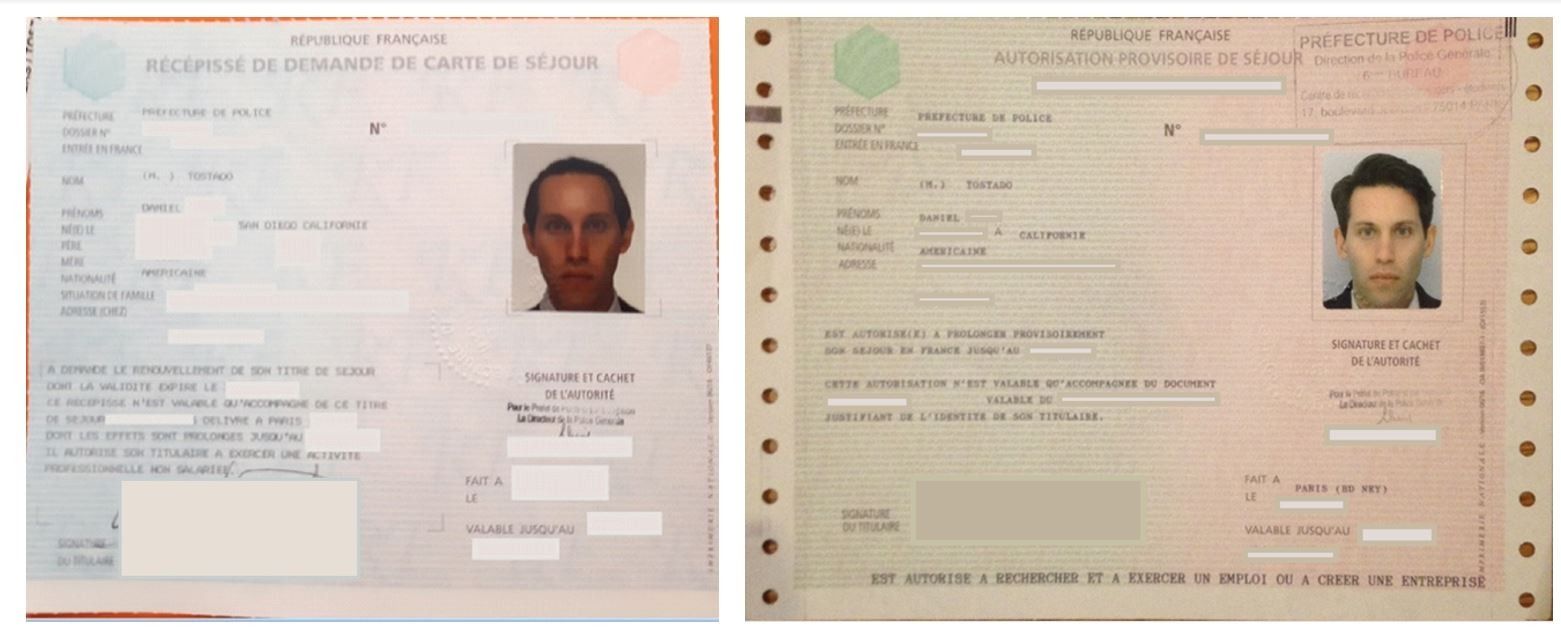In the course of my French immigration journey, I’ve had two visas, three residency permits, one APS, and six récépissés since my first move to France in 2011. Needless to say, experience is one of the most powerful teachers.
For this article, I am choosing to share my own immigration documents, with any sensitive information redacted.
What is the difference in France between a visa and a “residency permit”?
A visa is delivered by the French consulate abroad, authorizing you to legally enter and reside in France. When the visa gets close to expiring, you contact the local prefecture in France to obtain a residency permit to renew or change your immigration status in France. A visa is a sticker that is placed in your passport, whereas the residency permit is a plastic card the size of a credit card.
More about the French visa:
There are two main types of French visas: the short-stay visa (visa de court séjour) and long-stay visa (visa de long séjour). Anything 90 days or less is considered a short-stay, and anything that is 90 days or longer is a long-stay. For those from 32 countries (including the US), these citizens are allowed to enter France (and the Schengen Area) as visa-exempt tourists for up to 90 days in a 180-day period. (This is the rule in pre-Coronavirus times.)
There are many types of long-stay visas, and their duration is from three months to 12 months: Private and Family Life (VPF), Visitor, Entrepreneur, Student, Employee, etc. Another term you will hear on this is “VLS-TS”, a visa de long séjour valant titre de séjour or a long-stay visa that is treated like a residency permit. Any VLS-TS must be “validated” with the French Office of Immigration and Integration (OFII) within the first three months of arrival in France.
For those who qualify for multi-annual statuses in France, like many Talent Passport and Seconded Worker categories, they would receive a visa with a validity of three months, that then has to be exchanged at the local prefecture within two months of arriving in France for a multi-year residency permit.
You cannot travel to France and try to obtain a visa from there. Everyone, with the exception of spouses of EU nationals, must obtain a visa first before moving to France.
There’s another category that it’s worth avoiding: VLS-T, the Visa de long séjour temporaire, translated as the temporary long-stay visa. It lasts less than a year and is not renewable in France, which means it’s very unfavorable to receive this at the Consulate. The way to avoid obtaining it is to tell the agent that you have indefinite plans on residing in France, so that it is clear that you’ll need a renewable VLS-TS.
More about the Residency Permit
In French, the residency permit is translated to Titre de séjour, or Carte de séjour. These terms are absolutely interchangeable; they both refer to the plastic card. I prefer using the term Titre de séjour, so as to avoid confusion with the Carte de Résident (the 10-year residency permit, see below), which is a category of residency permit.
Residency permits are valid for anywhere from 6 months to 10 years (and there’s even a permanent residency permit.) Many are valid initially for one year (employee, entrepreneur), several are multi-year (including the different Talent Passport categories, and spouses of EU nationals.)
What’s a récépissé? What’s an Autorisation Provisoire de Séjour (APS)?

The Récépissé and the Autorisation Provisoire de Séjour (APS) are both temporary residency permits.
The récépissé is generally issued by the Prefecture upon filing for a change of status or a renewal of your immigration status in France. It is a temporary coverage until the prefecture has approved the next residency permit and has printed it off.
Récépissés are generally 3-months long and must be renewed regularly until the residency permit is issued.
The APS is a bit of a catch-all category, in which the Prefecture provisionally authorizes the recipient to reside in France. For example, we saw a lot of APSes being issued by Prefectures for foreigners without immigration status who found themselves unable to leave France during the Coronavirus lockdown.
APSes are variable in length, from 3-months to 12-months.
What is the Carte de resident?
This residency permit (sorry, I don’t have a picture of myself having one) is the 10-year card. It is suitable for those who want to live in France for a long term. Generally, it takes 5-years of continuous presence to receive it. For some, this status may be preferable than naturalization, because in some countries like India or China, immigrants will have to give up their native citizenship if they want to obtain another country’s citizenship. For those who do not want to give on their citizenship, but at the same time want to reside in France for a long term, then this is appropriate solution.
Get Additional Advice on Proof of Residency and Important Immigration matters for France
Born and raised in San Diego, California, Daniel Tostado is a dual-qualified French-US attorney, and practices exclusively French in-bound immigration, with a focus on private clients.
To further discuss proof of residency in France, or other matters related to living in France, reach out to Daniel and request a consultation.






